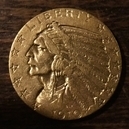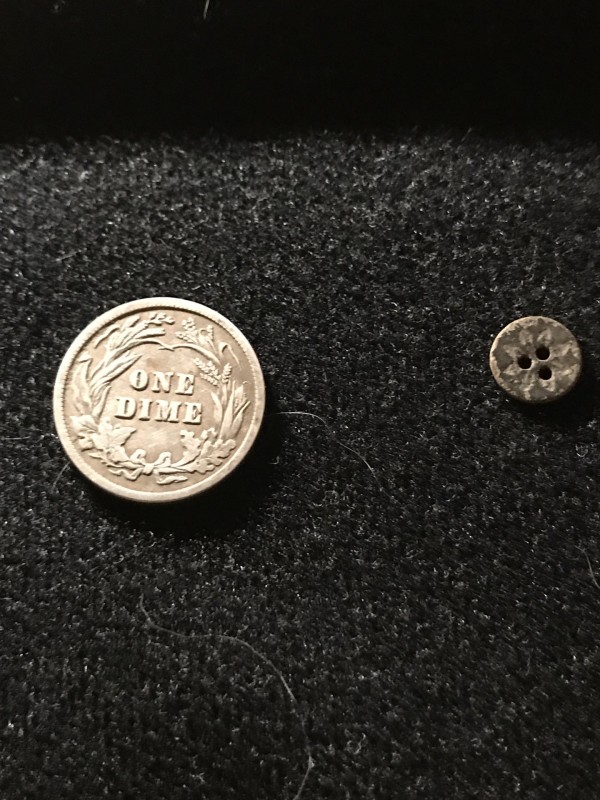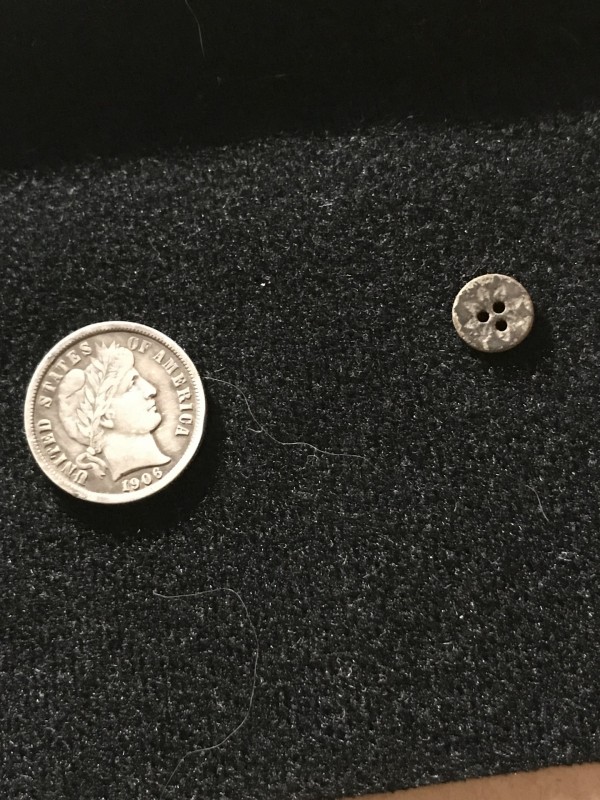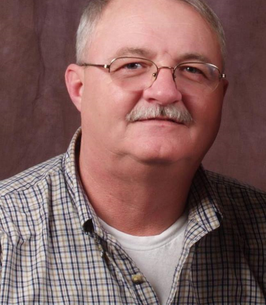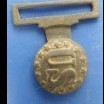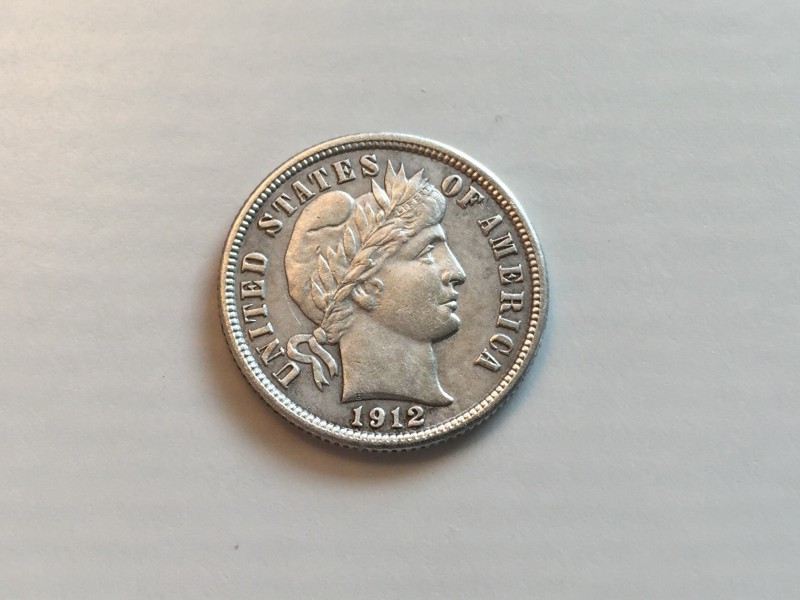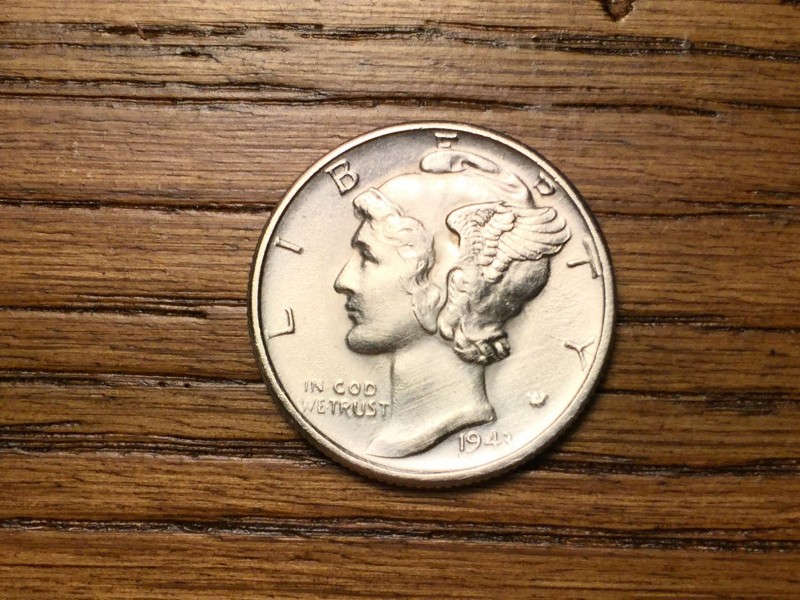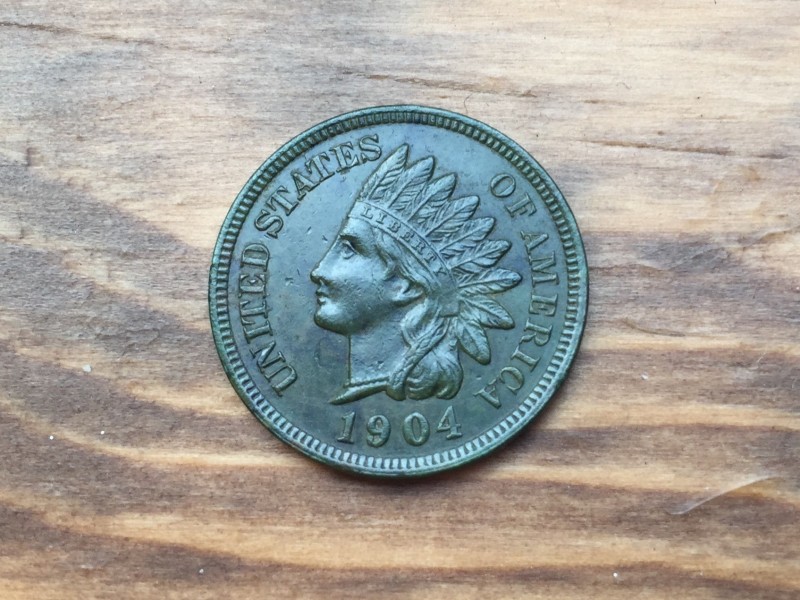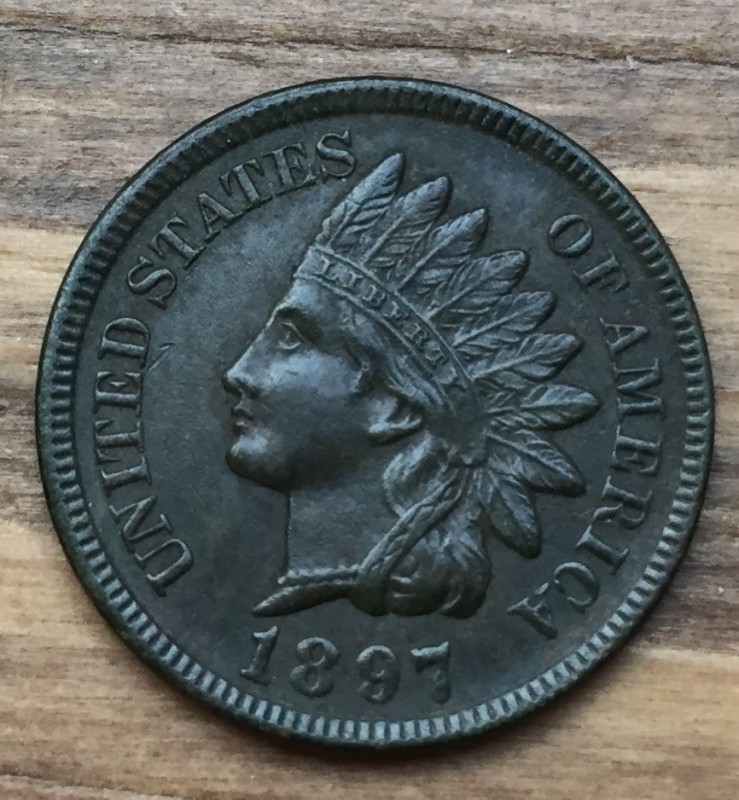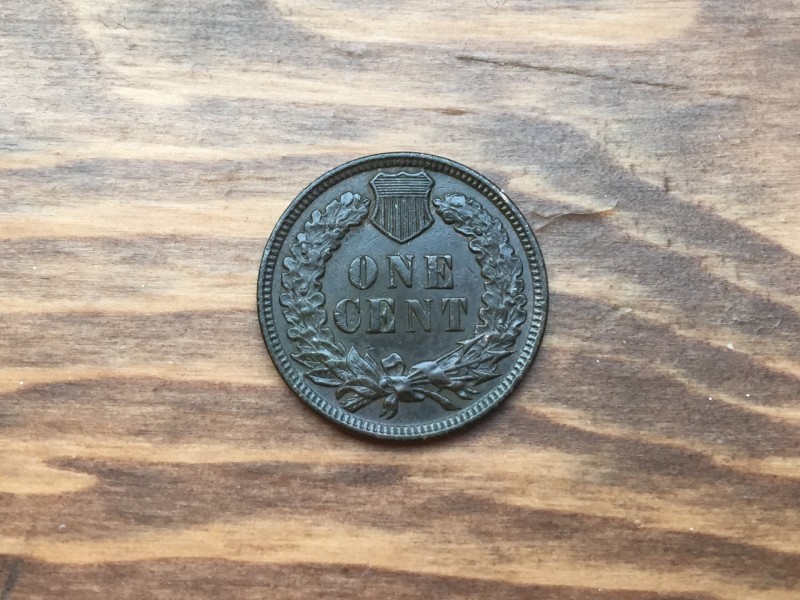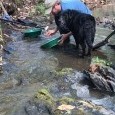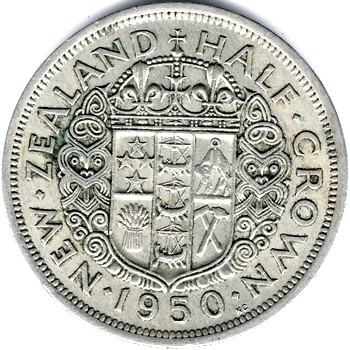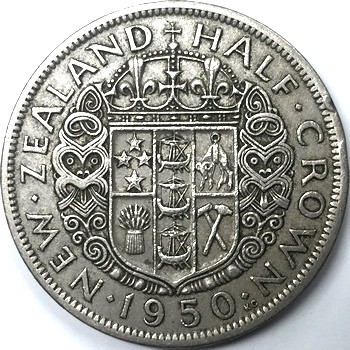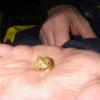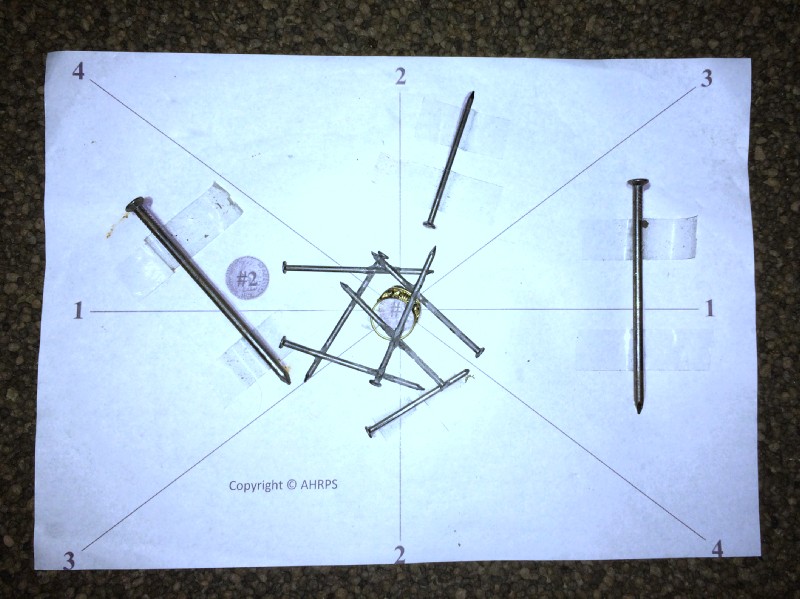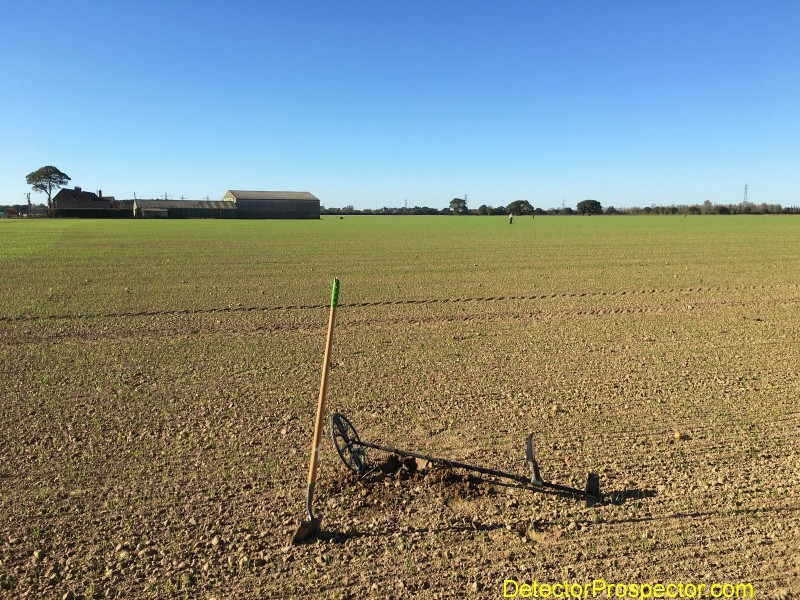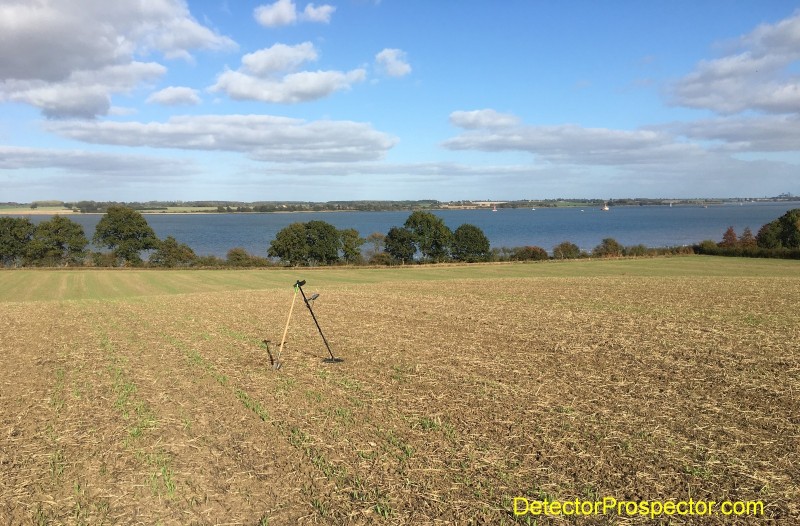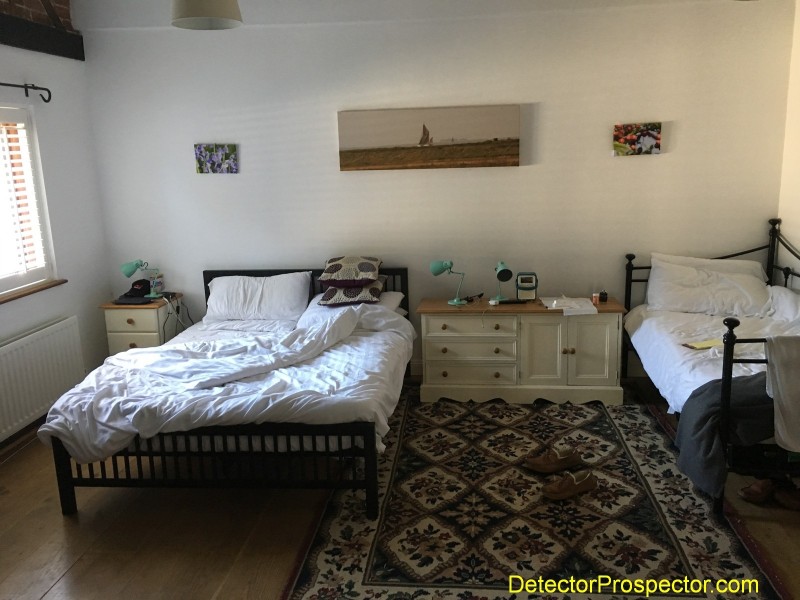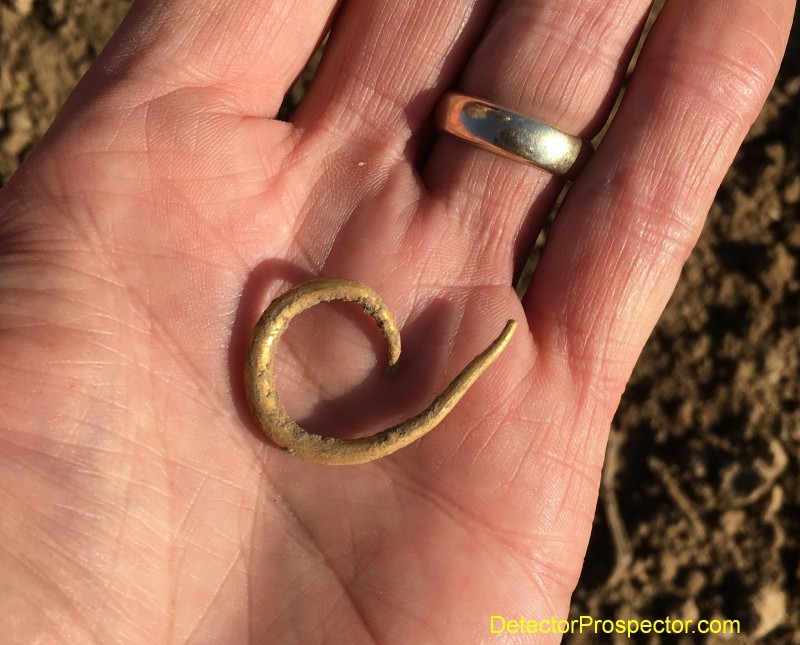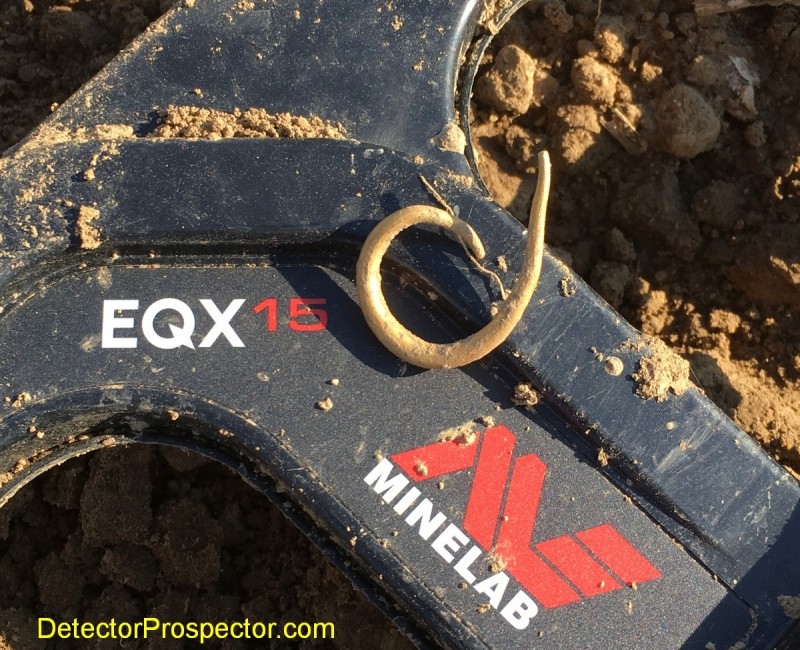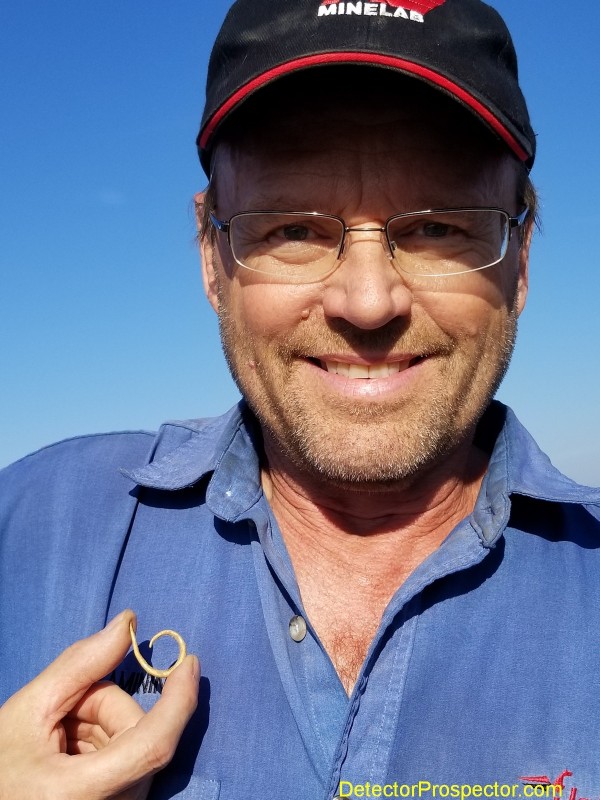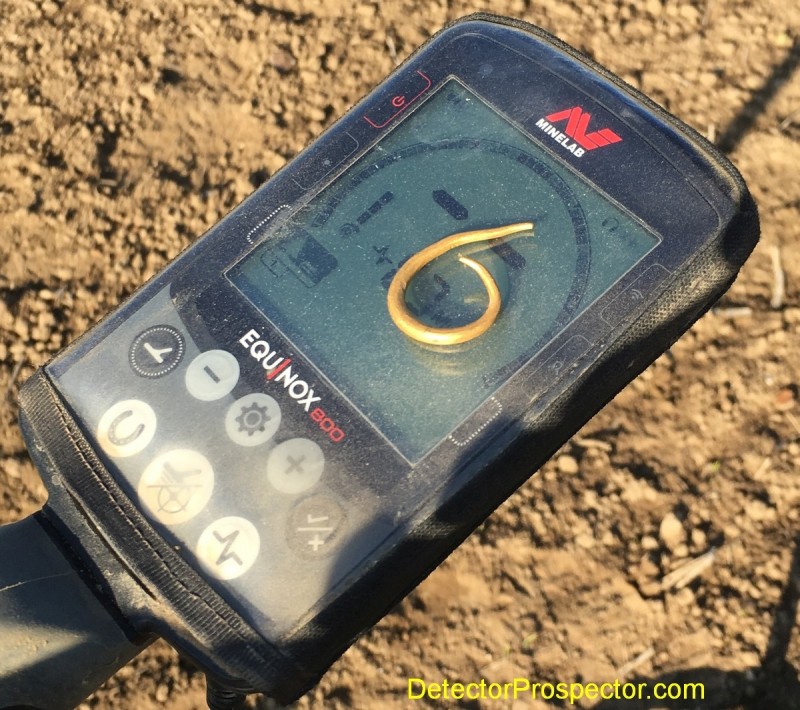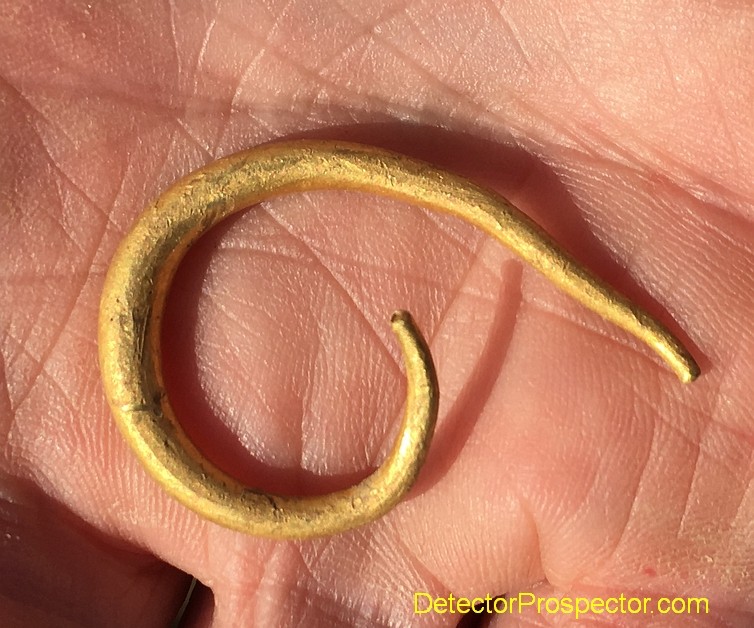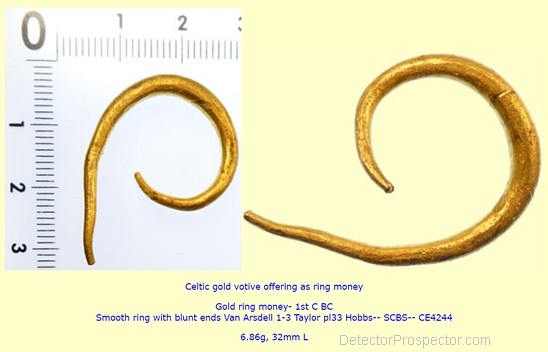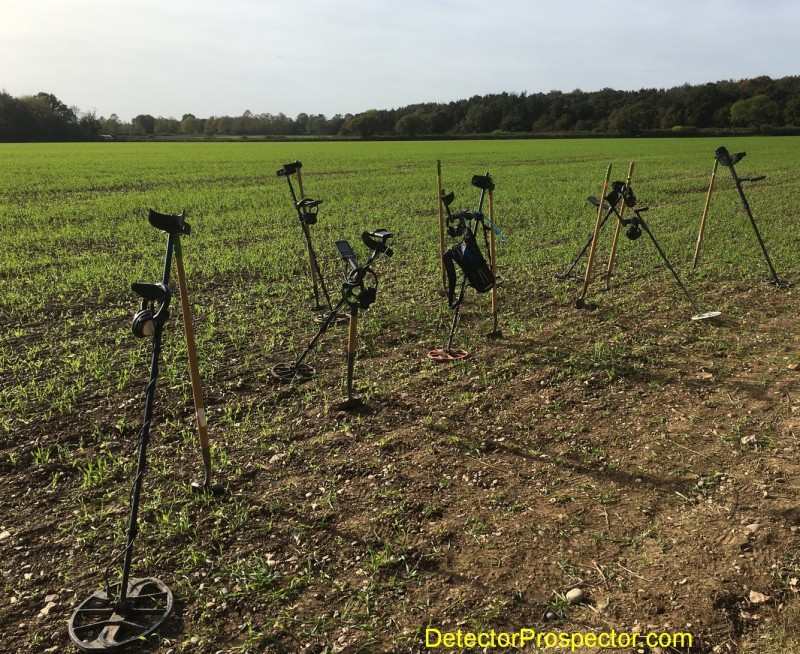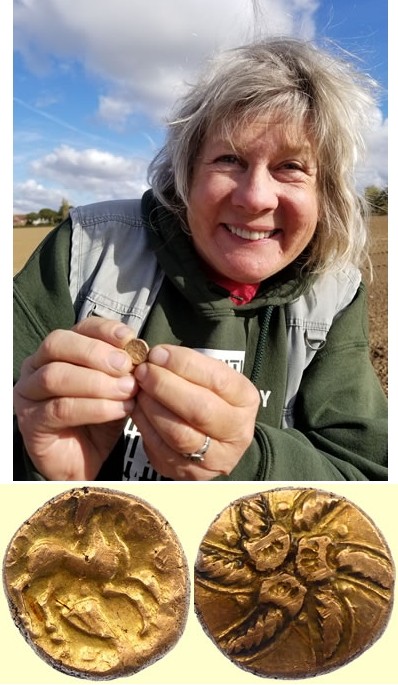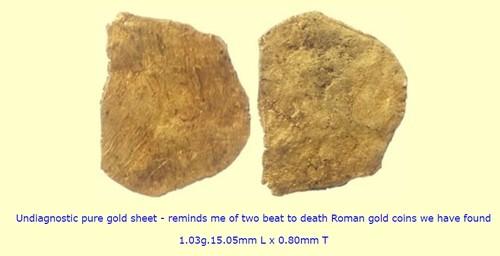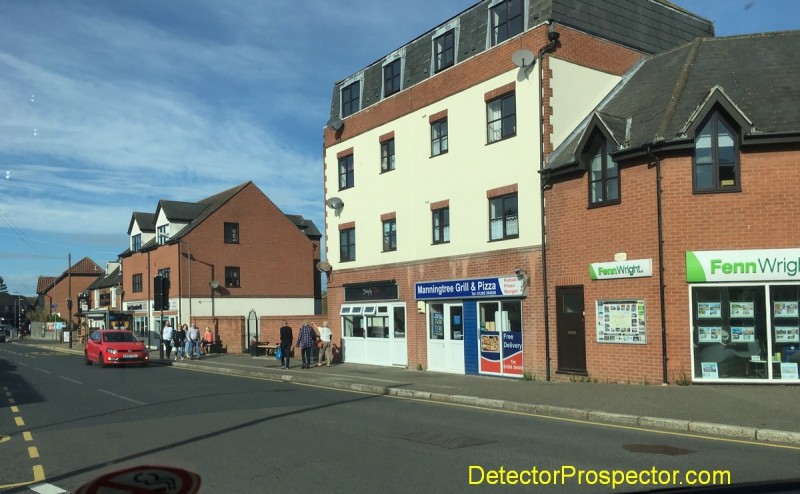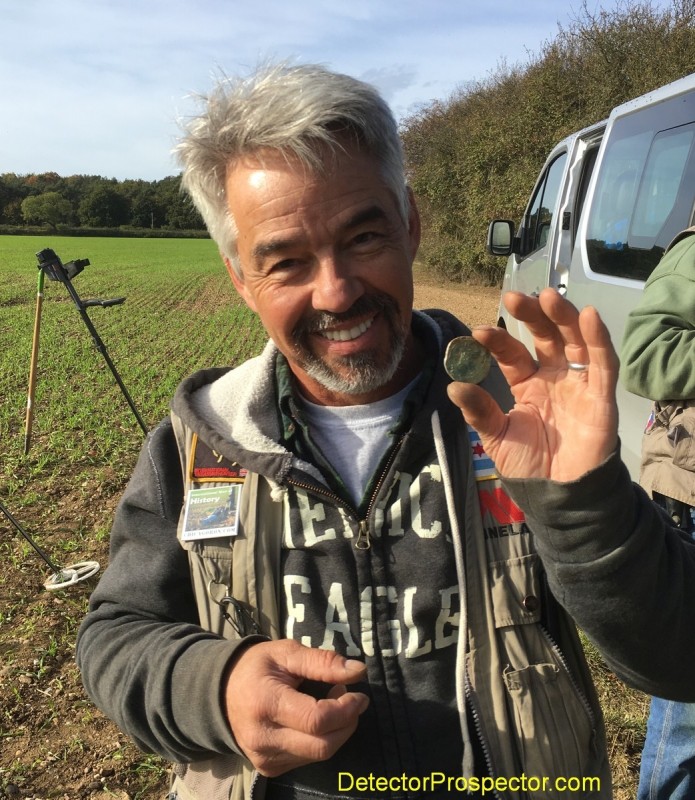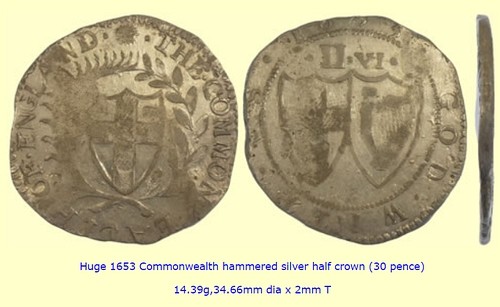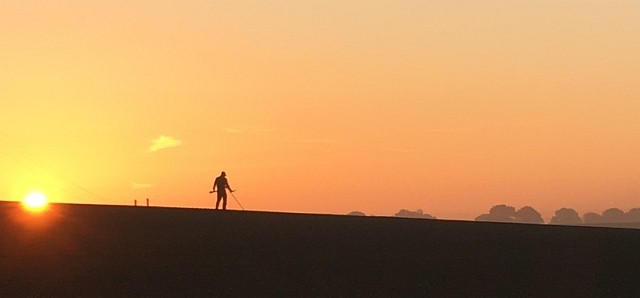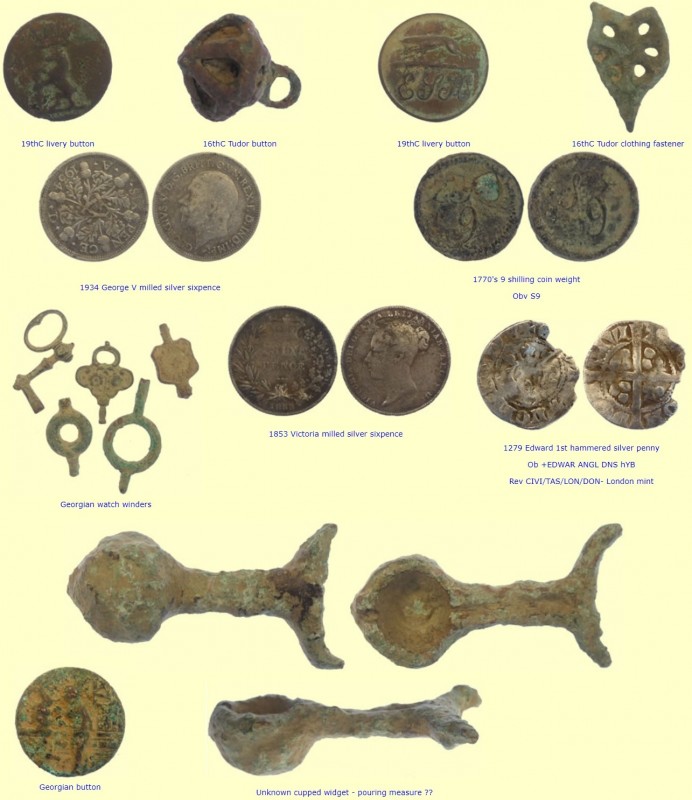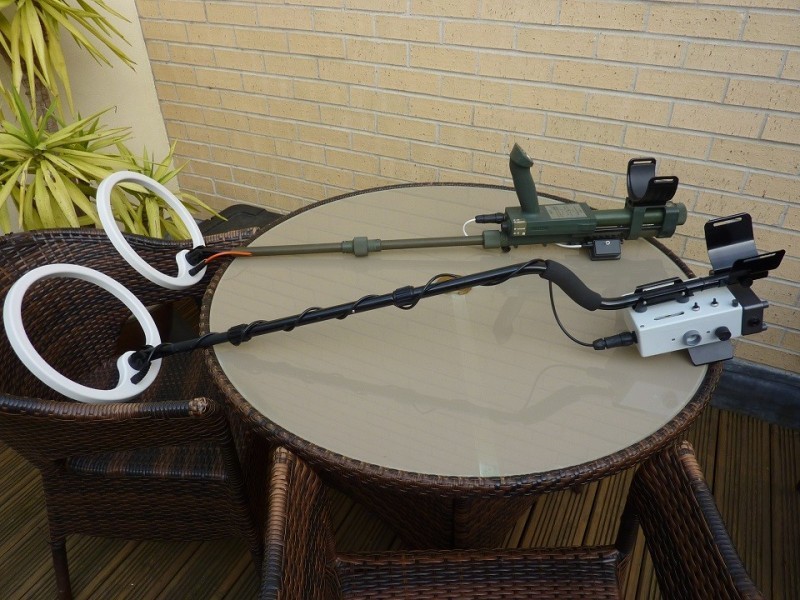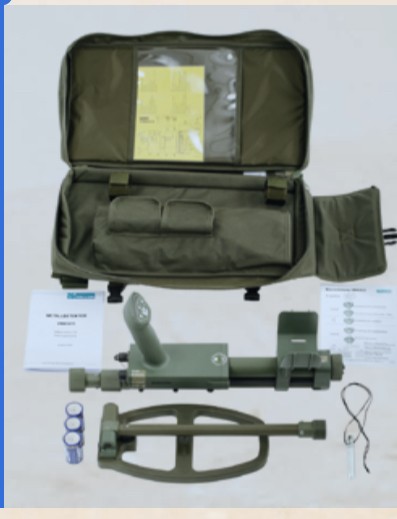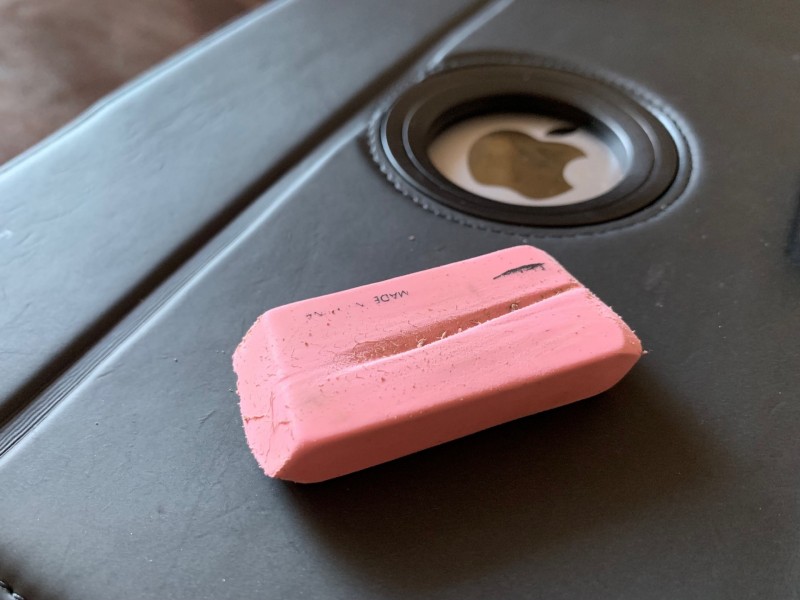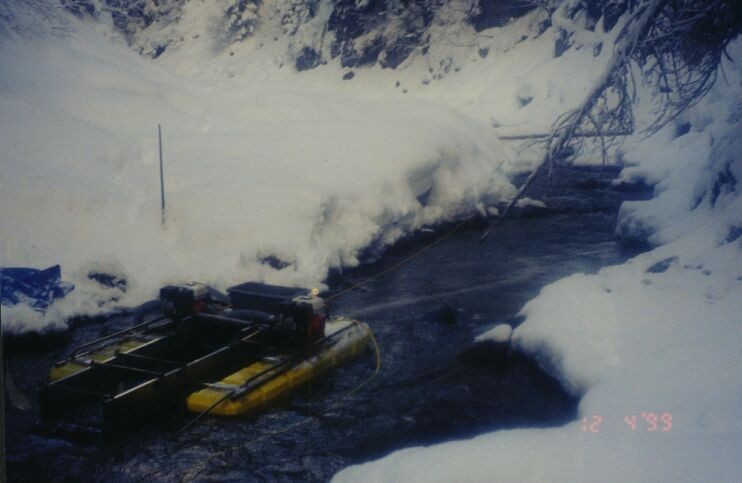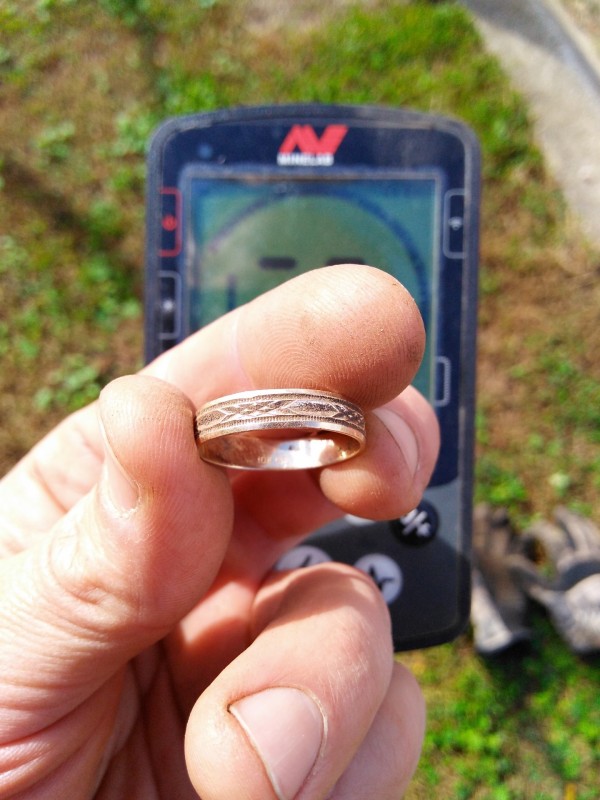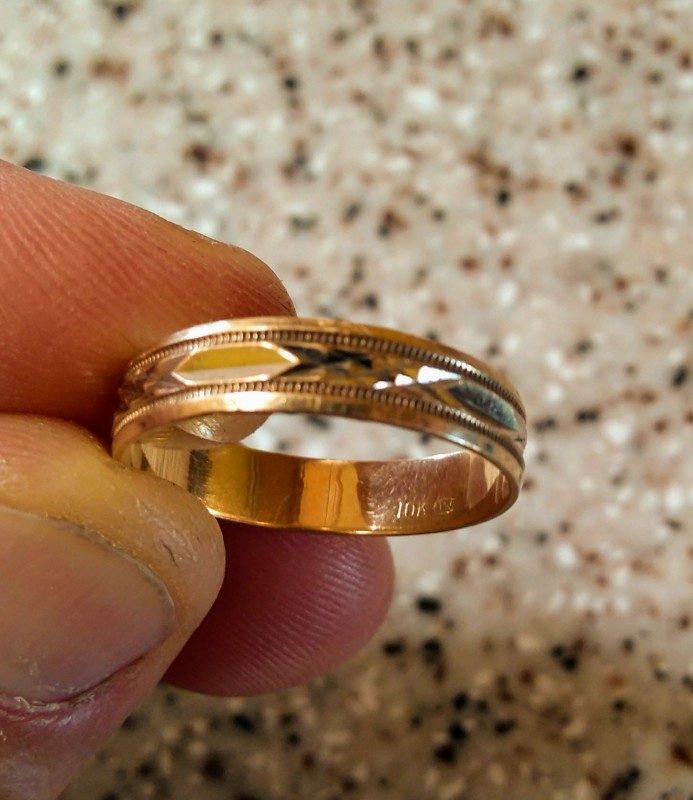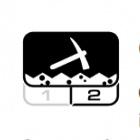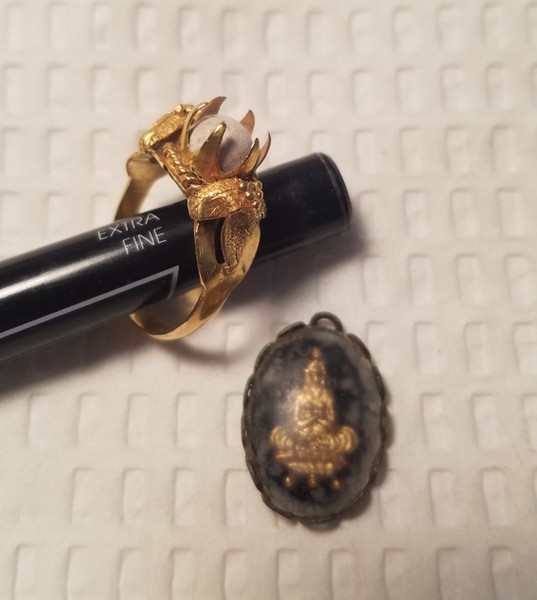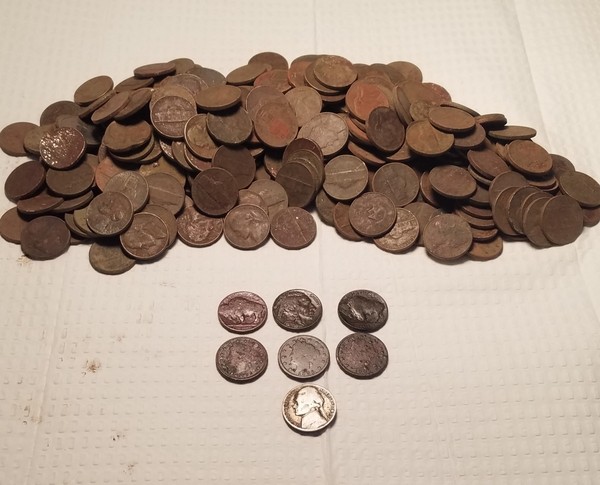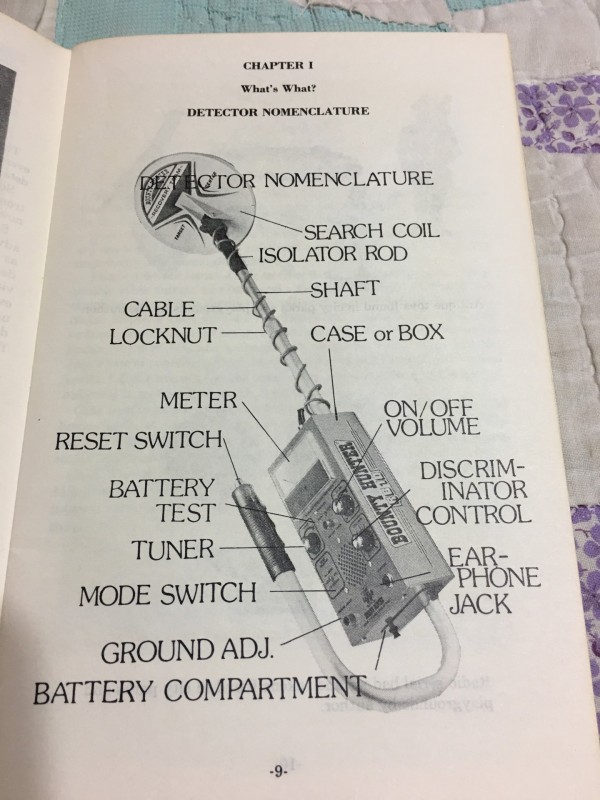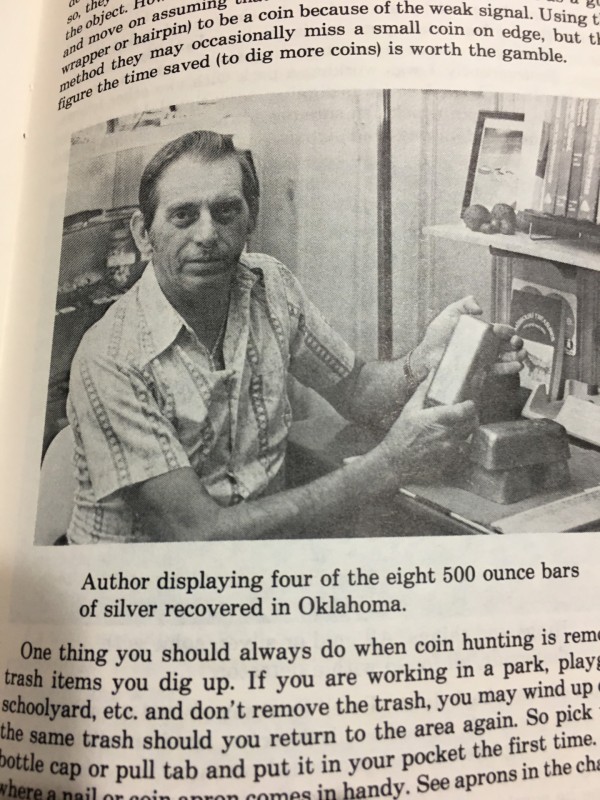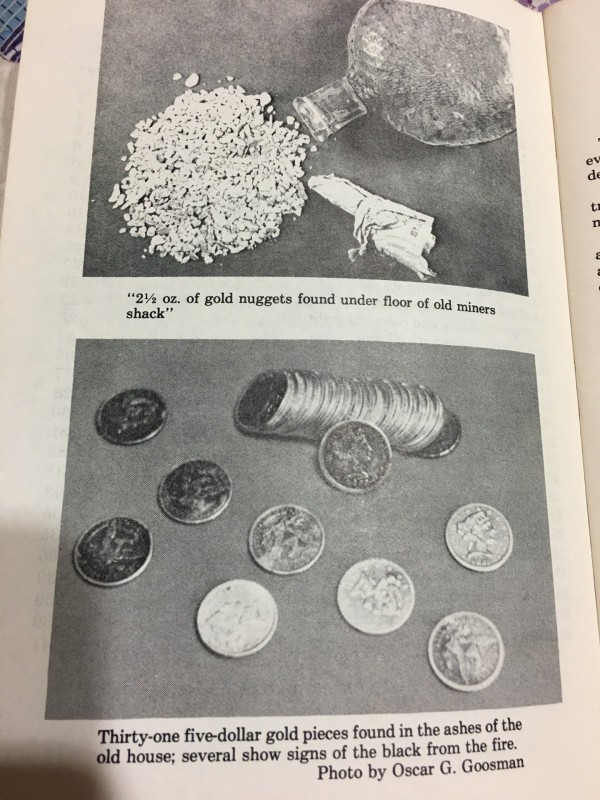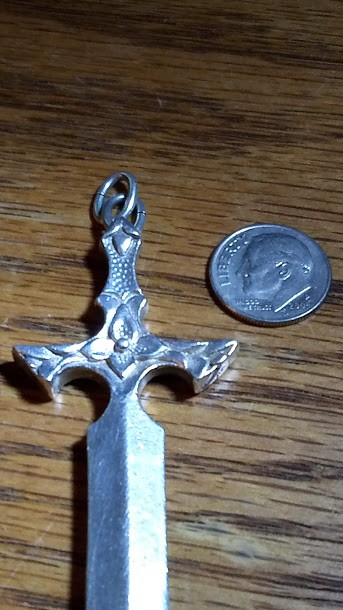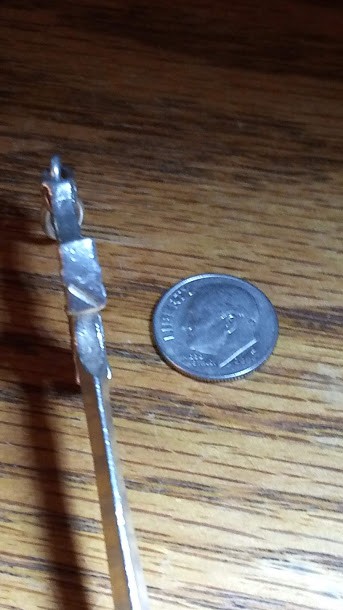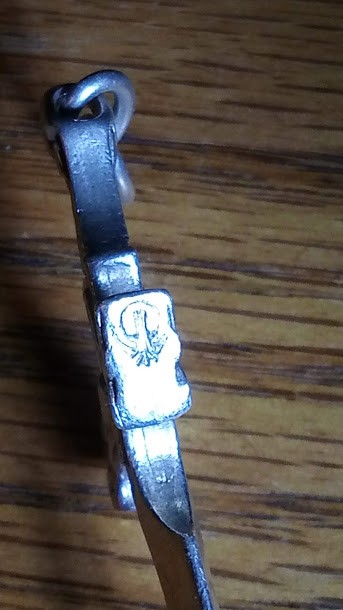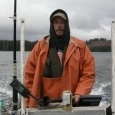Leaderboard
Popular Content
Showing content with the highest reputation on 01/14/2019 in all areas
-
Last Sunday was pretty mild, though windy; so I decided to take a hike up a mountain path that goes back all the way to colonial times. I had a lot of fun, and mostly was finding ammo until I got a good dime signal I expected a dime but was surprised to see this 1906 Barber dome. After a rinse-off at home I was astounded by the exceptional quality of this coin- just beautiful. I later found this colonial button which is the smallest button I’ve ever found. This button was 6” deep found using field 2. The equinox really hits on the tiny little items.5 points
-
Wow Chase, this is the perfect post at the perfect time for me, thank you!!! I got my Nox 800 on December 13th. It is arguably my first detector. I did have D-Tex Professional back in '68 but at 15 years old, I never did learn much about using it to it's best potential. I'm determined not to repeat that mistake with the Nox, so your post is fantastic for me! I'm in southeast Michigan and although we have had an extremely warm winter thus far, the ground is starting to freeze and limit a few of my learning opportunities. I've had the Nox out a half dozen times, mostly in my backyard but also to a couple of parks. As suggested, I've stuck to the Park 1 setting so far but need to experiment with reducing sensitivity and gradually playing with ground balancing. I don't want to introduce too many variables at once and not be able to associate effects with causes. Of course, the fact that I've already had the adrenaline rush of a couple small but interesting finds makes it more difficult to stick to a disciplined approach to learning. Dang, this is an addictive hobby. I won't bore you with the details of my penny ante finds, preferring to save those fish stories for my non-detectorist friends. They are more easily impressed with the ever expanding glories of these small adventures than you seasoned veterans who would instantly recognize my blind squirrel scenario. I will however let you know that I have printed your post and highlighted portions of it to help me more quickly learn to speak "Nox". Thanks again for sharing your knowledge! Cheers, Jim4 points
-
Once you got the basics down, I posted this in other forums but geared to those with a new Christmas present who are new to detecting and/or the Equinox... For those who just got a new Equinox but who have less detecting experience (Equinox is their first or second machine), I recommend a few things to help you climb the Equinox learning curve faster:Test it out on test targets in a test garden or at a productive site like a park, athletic field, or on a dry sand part of the beach to get used to its language. It can be different than what you are used to, but the way to learn it best is to just get out there and dig targets.While you are learning the machine, avoid the temptation to adjust any of the user settings or to switch modes. Stick with a single mode, preferably Park 1 (works well even on the dry sand of a salt beach), at the default settings and get really comfortable with the machine. Since each of the modes behave somewhat like a different detector, you want to avoid the situation where you are climbing multiple learning curves at once.Even though each of the modes are "optimized" for certain types of targets and detecting situations/site conditions (see the manual), any of the Park/Field modes used at their default settings will work for 90% of targets and 90% of conditions and there is plenty of target overlap between modes (i.e., you can find silver coins in a relic mode such as field 2 and relics in a coin mode such as Park 1), so pick a mode and stick with it while getting comfortable with the Equinox. Quick Mode Summary (remember, these are the optimizations, all the modes will detect most non-ferrous target types, just that some will be more sensitive and you may get slightly more depth or the optimal targets will "pop" more in certain modes):Park 1 - high conductive and large deep targets like silver and copper coins, coin spills, and coin caches. (Low frequency weighted). Minimal falsing due to high iron bias setting and disc at 1. 5 tonesPark 2 - mid-conductive coins and small, typically gold, jewelry items (higher frequency weighted). 50 tones. No iron bias. Disc at 0.Field 1 - Similar to Park 1, designed for plucking non-ferrous out of plowed fields, but weighted towards high conductive targets (most coins) therefore just a 2 tone mode. No Iron Bias. Disc at 2.Field 2 - Similar to Park 2 - but optimized for relics and small mid-conductive targets such as brass, lead, tin, nickel, pewter, gold, and, unfortunately, aluminum (nature's little practical joke on detectorists). Disc at 2.Beach 1/2 - Optimized for high conductors but will find gold jewelry on wet sand (Beach 1) and surf (Beach 2). Disc at 0. Medium iron bias.Gold 1/2 - VCO audio mode ideal for nugget shooting or mid conductive relics, will display a target ID but no audio ID just tone intensity and pitch raises with larger and/or shallower targets.The default settings are fine for 95% of normal detecting situations. The only adjustments you need make are to noise cancel the machine, run a ground balance (even then you can get away with the default ground balance setting for most situations), and then adjust sensitivity only as high as necessary to keep the machine running stable. Anywhere from 18 to 22 on sensitivity will give you plenty of depth. There are situations, especially in mild ground or where there is low EMI where you can run up to the max sensitivity, if desired. But avoid overdriving sensitivity just for the sake of trying to max it out, you will likely just introduce noise and instability and end up doing worse than if you just left it alone or reduced it a bit. Sometimes, even when the machine appears stable (i.e., no chatter with the coil in the air) at high sensitivities, there may be other subtle clues you have sensitivity too high such as excessive iron falsing or unstable target IDs, so be aware of these "tells" if you are running at high sensitivity. Site conditions other than EMI levels such as ferrous and trash density also play into the sensitivity level setting decision. In some cases, establishing target separation is more important than depth (discussed more in the recovery speed section below), so establishing your best recovery speed setting in balance with the right sensitivity setting will optimize the situation at hand.When you get comfortable enough to adjust other user settings such as discrimination, tone breaks, recovery speed, and iron bias. Go easy on the adjustments so you don't turn the machine into something you can no longer recognize. Performance settings such as recovery speed and iron bias only typically need need to be adjusted one or two clicks from the default at most. Higher recovery speed settings improve separation in high trash but set too high and you will affect depth. Trying to lower recovery too low to max out on depth (similar to overly increasing sensitivity) you will start to introduce ground noise, especially if you don't adjust your swing rate consistent with your recovery speed setting. Iron bias helps (a little) with iron falsing but it can also tend to mask keeper targets hiding amongst the iron (which counters the primary advantage of Equinox, its fast recovery speed enabling separation between trash and treasure). I just leave Iron Bias at 0 most of the time.Use Beach mode only on salt sand beaches (wet sand and surf). Any of the modes will run stable on dry salt sand beaches and in freshwater conditions. The beach modes can be slightly less sensitive in normal terrestrial hunting because they are optimized for salt ground conditions and will also throttle back transmit power when high mineralization conditions are sensed, so don't use the Beach modes other than at wet salt sand conditions.Avoid the prospecting/gold modes at first, until you have a level of comfort with the machine, because it does not have tone ID and uses VCO pitch audio, which is a whole different ball game and has a learning curve of its own. All modes and settings have their advantages and tradeoffs (downsides). Learning how to master the Equinox by balancing those tradeoffs and understanding what the tonal nuances are keys to success. To get there, you need to put in the swing hours and dig a lot of trash targets and you will gradually kill it out there. There are no shortcuts, so avoid deviating from the plan out of frustration. Be patient, learn and you will do well.Finally, there are no absolutes, so don't be afraid to experiment a little but also, if something is working for you, stick with it.4 points
-
Bob Canaday worked for White's Electronics for 33 years and was one of the true experts in the metal detecting community, posting on White's Forum, Findmall, and Friendly Forums as rcsnake. I used to Google and read all his posts that I could find. Bob was particularly knowledgeable on the White's V3i and wrote Hunting in Mineralized Ground with the V3i My condolences to Bob's family and friends. Robert Moore Canaday obituary Bob explaining the White's V3i Factory Reset....3 points
-
The old coinshooter has been gone now for many years (1993) but I remember him very well..he used a CM 3 then, which he just wore out, it was replaced with a brand new Coinmaster 4...I got to hunt with him a few times and it was a pleasure to watch him slowly shuffle along he would stop scan back and forth and either dig or move on, I knew he was listening carefully.. We were hunting together in an old park, lots of targets old steel BCS mostly and other junk.. He called over to me and said what do you think about that? He used one of those old diggers that looked like it was made from conduit with a long narrow point, perfectly stuck on the end was a nice little gold ring..... This person had a ring collection that would choke you, in fact one ring he told me about that he had found was a gents gold piece with a large precious stone, he had taken it to a jeweler that cleaned it for him and I think later he sold it to the jeweler for enough to buy himself a new Ranchero...I tried to hunt with him as much as I could but we lived quite a distance apart and I was just starting to work on preliminary Trans Alaska pipe projects... By the time I could spend time with him he could no longer swing that heavy Whites unit but he liked tagging along with me.. The gold rings he had found were sold but the other pieces he had tied together on a string and there were many.. I haven't looked in the big canvas bank bag he gave me years ago that was almost full of dimes, quarters, halves and a few silver dollars he had found at the old Fairgrounds, parks and old closed country school yards.I .learned a lot by watching how carefully this person hunted, slowly, listening and moving around..He did his homework, a little research and talking to the old timers that stopped by watching him...Who was this person? This Old Coinshooter, I knew him very well, He was my Dad....3 points
-
I'm just glad the guys parachute opened!!!!-----And yes, I have an E800.3 points
-
Can't argue with those results Cabin! I find my share of old, often semi valuable coins...I get the dirt off, that's it. Thing is, you can't go back once you do it. My buddy Ron ( California Relic Adventures) has plenty of incredible coins. He shines them up. I razzed him once, he said I find them, I like em shiny, I don't care what someone thinks. True enough!3 points
-
3 points
-
Thanks for posting in this thread, Cabin.. I was trying to find an old thread where we were talking about cleaning coins cos I wanted to credit the person (you, as it turns out) who mentioned erasers -- but couldn't find that post.. I have a lot of artist supplies, mainly photograph / negative dyes and pencils accumulated during years in the now mostly obsolete industry.. I also have many different types of erasers but not a large pink one, since those are the ones found on the end of most pencils.. During the previous thread I found your eraser solution interesting so deceided to give it a try on IHPs I'd taken as far as I could this side of ultrasonic, caustics and/or oil.. This is when I discovered I didn't have a large pink eraser in my arsenal and also discovered they'd just break off the end of pencils due to amount of pressure needed (I could have made it work using vice grips or hemostats, but having others to test saved it for a last attempt if necessary..) Out of all the others, which included plastic, gum, vinyl, magic rub, kneedgummi, an unknown substance containing erasing fluid and a few others unidentified beyond 'eraser', the only one that worked, and worked quite well, is the PaperMate Union ink on one end pencil on the other end eraser (other name brands omitted intentionally..) It took a lot of elbow grease, but I eventually got the one I worked on 98% clean and I could have gotten the remainder if I worked some more on those recessed areas.. The price one pays is yeah, they become really shiny.. But I've been letting it sit out, putting it in with change etc. etc. and it's toning back down kinda quickly.. I only tried this on the one copper.. I'm fairly certain the ink side would be damaging to 'silver' coins and the pencil side will leave "rings around the stars" while making the rest of those coins too shiny.. But I still have a bunch of other erasers to try, if I want to give other than copper a go.. One other thing I noticed: As easily as new "copper" coins scratch even with new soft cloths, old copper coins stand up to just about whatever you throw at them eraserwise.. I couldn't notice anything that stood out above what was already there.. Point being, between these two types of erasers ( EDIT: and the hydrogen peroxide ) a person can most likely do a durn good job at cleaning up other-than-numismatic-value copper coins.. Swamp EDIT: This references your first reply only..2 points
-
I used my iPhone for the photos. I can’t remember on these particular photos but I either cropped them or put a magnifying glass in front of the lens for the close up. Not all coins turn out this nice of course as some coins just come out of the ground helpless and others need more then an eraser to clean up nicely.. I always start with an eraser on copper coins after I rinse the loose dirt off. Some coins will be packed with fine dirt that won’t come off with the eraser. With those I will boil a small amount of Hydrogen Peroxide in a glass jar in the microwave and drop them in for a short time. The longer you leave it in, the darker the coin will get, so I usually start off for maybe a minute. If your lucky the eraser will then easily remove the caked on dirt. If not it goes back in to the peroxide for a few minutes. Here is a coin I used peroxide on. You can see it is dark brown and if you look closely on the rim at around 1:00 position you can see I went too hard with the eraser and it started to go through the patina. It also looks like I used Peroxide on the 1897 in my previous post. The 1904 just an eraser. I only use Peroxide for copper coins. Not Silver. Bryan2 points
-
Finally got around to finishing a video of Dredging In Virginia back in the Spring of 2018. Got two nice little nuggets, picked one off of bedrock but the larger one snuck by me and was found in the box. Let me know what you guys think, and would love to hear any advice, as im always learning. And as always Thumbs up for GOLD!!2 points
-
Thank you for accepting me to the Forum, I’ve been a lurker for a long time but had forgotten my username so I’ve re-registered. im from the UK hence the username and I’ve been detecting since the 70’s in Cambridgeshire. 4 years ago I moved to the coast in North Devon and now only detect my local beaches. I’ve now upgraded my machines from a Ctx3030 to an Equinox 800, and my Whites dual field to the new Tdi beachhunter. Once again thank you.2 points
-
Guys I know what you say is true but with me it’s somewhat different. Anytime I have money in my pocket it’s the time for me to buy . I don’t care what time of the year it is . Chuck2 points
-
Finished air testing the 160 Warnick TID's with the Minelab Equinox 800. I used the 11 inch coil, set up a 'platform' (all plastic) ~3.5 inches above the coil to facilitate repeatable tests with no rotation. I ran in Park 1, gain of 16, recovery speed = 5, iron bias = 0. I used my standard custom 5 tones which includes a nickel zone of 12-13, so I can hear 11's and 14's (different tones) separated from the 12-13. I also watched the screen to see the ID's there, too. I moved the coins back and forth across the DD intersection zone at a rate of a couple cycles per second, several cycles for each coin. I did this directly over the center of the coil (attach point) but also about an inch towards the toe and an inch toward the heel of the coil. The 160 nickels were all found in pocket change in the 1960's through the 1970's (and maybe a few from later decades). Most were found in central Indiana. All display the unattractive dark gray patina characteristic of Warnicks well circulated in commerce. Really nothing too exciting here. Most centered on 13 with both 12's and 14's (but these latter in the minority of the chirps). About a dozen showed no 14's but did have some 11's. Two or three stayed exclusively in 12-13. About half dozen coins never showed a 12 and were 13-14 range consistently. I checked the dates and mintmarks of the outliers and saw no pattern. Ditto any wear or coloration differences. One possible clue for Steve's study came when I decided to test the 6 nickels I found (buried) with my Eqx during 2018. Five were consistent with the most common signals shown by the above tests. However, one would occasionally show a TID of 15. I don't remember any of the 160 non-MD find nickels showing a 15 but can't say for certain it never happened. As many of you have experienced, Warnicks that come out of the ground tend not to show the dark gray patina but rather have a cleaner, whiter appearance. The one Warnick that touched 15 had a reverse that was the cleanest of all six, but its obverse had some black scale staining (darker than the non-dug Warnicks). I don't know if this appearance is connected with the 15 reading or not. Sorry, Steve. I would have liked to have found one of the high TID coins both to add to your case but also to just own one myself. But hopefully these new data will somehow be useful in your quest to get an answer to this intriguing mystery.2 points
-
My contributions in that regard are at an end. It’s basically working for others for free and detracts from regular detecting. It was a lot of fun in the early days when people wanted information and were appreciative of it. These days however people don’t want to hear from industry experts and insiders. It’s all about getting YouTube reports from “regular users”. People with industry connections are now looked upon with suspicion and so for me personally I don’t see the point anymore. I purposefully took on testing/reporting on the Goldmaster 24K as a bookend to my reporting efforts. It started with me and White’s ages ago and so it seemed fitting that I wrap it up with White’s.2 points
-
Thanks' to all for your replies and great answers, I do understand where your coming from with your words of wisdom. I think I'll take Steve's route. I love my pretty shinny little coins and I can spend hours cleaning and polishing my worthless Pre-decimal and Post-decimal (if that's a real word) N.Z. coins. I have one of each of these 1950's Half Crowns though the Far Diamond and the Near Diamond are near worthless I know . For now though I have my sights set on a much more interesting item, wait till your see my next post. This one is sure to catch someone's attention. I do hope we have some WW II historians here with us. Happy hunting. Paul.2 points
-
Steve, Oh, How well I remember those days. Packing down and climbing into the canyon,suit up , dredge 3-4hours,change into dry clothes ,then climb out and trek back uphill to the parking lot,,, The good note is we were in really good shape after about a month of this . Wish I still had some of that gold left, but lots of good memories and stories to tell when I am no longer able. This summer, adding to my bucket list ,dredging in the Wiseman area on river claims....2 points
-
I did this test on the picture - the ring is under the nails. Detectors -and small coils ,,in gold ring - Nail test:...base - mineralized ceramics "Liapor"- 4 bar Fe2O3 - Tek. G2-11DD" coil .. Equinox 800.-6"coil ,p. Park2 ,IrB 0-1,sens 15-20,rec.sped4-6, ... Yes-4way-100%passed...slightly faster sweep coil.. Fisher Cz3D-5"coil. disk0, sens 1-6 ,exhanced and salt,- No-0%way passed... Teknetics G2- 3.5x6.5" -nel snake coil: sens 70-100,disk 31-33, Yes 4way-100%passed, Disk on 33-slightly faster sweep coil...,, Disk on31 normal ,and slightly faster sweep... Garret Ace400i -4.5"sniper coil- allmetal,sens 1-8, -4way -No passed..., from 1-2 sweep directions -in Sens 5 bar,,a timely signal at the edge of the coil.. Tesoro Mojave-7"-precision coil, Disk in 1/2 foil- on the letter " I "-on Iron, sens 2-5, .. Yes 4way -100% passed ...-slightly slow sweeping the coil... Golden Mask Coin-killer 15khz -5" spider coil :disk on1.5. sens 1-8..1-2tone, Yes..4-way 100% passed.. -Way n.3 slightly slow sweeping the coil.. Whites Spectra -6x4" shooter coil : 1.F-22.5khz, program Hi-pro ,12.5hz-high ground filter, recovery delay 25-30 ,RxGain-5, DS-92 ,bottle cap Off.,- ..Yes 4-Way100% passed.. -slightly slow, sweeping the coil..... At 3F multifrequency-2 way occasional signal, at 1F 7.5khz-no signal... The tests will continue-try using 6X10 ", standard, or 13" coil,... Later I try to place the gold ring under the nail in this test...2 points
-
Simon, people think it is a function of the Equinox having a 50 target id range but it is nothing of the sort. I do things like keep all my trash while digging all non-ferrous. Then make piles of trash/treasure based on target id. So I have a White’s V3i with 195 target id numbers -95 to +95. Ferrous is negative so that is 95 non-ferrous numbers versus 40 for Equinox. Over twice as many. So when you do that do pull tabs now magically come up as different numbers than rings? No. Lets say for yucks that pull tabs read 10 - 19 on the Equinox. That would be close to the 20 - 44 range on the V3i. If I take 100 pull tabs that fall in that range and test them, I get 10 piles with the Equinox. The V3i will have 25 piles with fewer tabs in each pile. Ten rings tested are going to end up in several of the ten Equinox piles, and they will also end up in the 25 V3i piles. So if I am digging one particular ring with one target id then I will dig fewer tabs with the V3i to get that ring. But here is the catch. You do not know what rings you will dig ahead of time. All you know for this example is that all the test tabs and rings will appear at 10 - 19 on the Equinox and 20 - 44 on the V3i. Now, since you don’t know the target id for those ten rings, tell me which numbers you will reject on the V3i that will reject the tabs but get the rings. You can’t do it because you don’t know the target numbers for the rings, and there is a ring made for every target number. The only way to for sure get all ten rings is to dig all 10 - 19 signals with the Equinox and all 20 - 44 targets with the V3i. You get all the rings, and both machines will hit the same tabs. Adding target id numbers does not really help much because we rarely dig single target id numbers but instead we dig ranges of numbers. Now, with the V3i and time I can discover that certain tabs bunch at certain target id numbers. The V3i does allow more selectivity and so if I discover one particularly prevalent tab I can reject it with lower odds of missing a ring than if I reject one target number on the Equinox, since each Equinox number covers more items under one number. An expert hunter can use statistical odds better with a detector that has more range rather than less, but it is still a form of educated guess based gambling. Leaving any non-ferrous items in the ground will always come with the risk of desired items missed, end of story. Trash & Treasure - And More Trash!2 points
-
I am primarily a gold prospector but I do enjoy all things metal detecting. The thing is I really like finding gold (or platinum, silver, etc.) so my focus is always on precious metals. That being the case relic hunting has not particularly appealed to me, especially given the laws surrounding finding true artifacts in this country. Many relic hunters are at least technically in violation of federal law if they are recovering items 100 years or older and in many places 50 years or older can get you in trouble. I don't need that kind of problems in my life, and so even though the actual risks involved tend to be overblown, it is not something that excites me. I have the law firmly on my side when prospecting for gold on land open to mineral entry. Eight years ago some friends suggested I might enjoy hunting ancient artifacts and gold in England. The UK has laws regarding the recovery of antiquities that are far superior to ours. They actually support metal detecting and have proven so successful that museums are being overwhelmed by the numbers of exciting finds being made. I always wanted to find a gold coin anyway. My friends suggested the operation that centers around Colchester, England. Colchester is the site of the earliest Roman occupation in England and has history extending far earlier. The Celtic tribes in particular were active in the area, with many Celtic gold coins found by detectorists. The gold coins found span the millenia though including hammered gold coins and milled gold coins of more recent vintage. Just browse the website finds page for an idea of the types of finds made every day in this area. All photos in this story may be clicked or double clicked on for larger versions. Just one field of several at this one location. I could have spent the whole trip here. The hunts are limited to a couple times per year when the farm fields have just been harvested or planted, so Feb-March in the spring and Sept-Oct in the fall. The limited timeframe and limited openings means it is hard to get your foot in the door with this club unless you apply a year or more in advance. 2019 is already filling up and people are booking 2020 now. Long story short I made the trip for two weeks back in 2010 as told at Metal Detecting Ancient Coins at Colchester, UK. I refer you there for more details especially photos of all my finds. The hunt was amazing with finds ranging over a 2000 year span. Finds that would be world class in the U.S. are not only common but considered "new" by comparison to the finds I made almost every day I was in England. Yet I did not score that gold coin. There are many found, but when you consider the number of people hunting 12 hours a day the reality is that you have to be very lucky to get your coil over one, even given a full two weeks. I came away better educated on that reality. It was a fabulous trip but I was in no great rush to return knowing what I learned, plus it rained half the trip, and UK farm field mud is as sticky as it gets. It is far easier to find gold nearer to home and I went back to prospecting and jewelry detecting as my main focus for finding precious metals. Nostalgia does creep up however, and as time passed I thought I should give it another go. I booked a slot with two of the hunt managers, Minnesota Mindy and Chicago Ron, figuring that I had a shot at maybe at least one of them. I had never met Mindy but we knew of each other from Ganes Creek days, and Ron I took a photo of making his first Morini Celtic gold coin (see story above). A year went by and then suddenly Mindy had an opening, which I jumped on immediately. Just a few days later Ron had an opening. I was going to decline, then saw by some miracle his week started when Mindy's ten days ended. I really hate making trips of any magnitude for less than two weeks. This is low odds stuff and the costs also do not justify short hunts in my mind. I booked with Ron also and suddenly had seventeen days in England on my calendar for October 2018. By sheer coincidence it turned out that a forum member unearth (hi Gary!) was booked for Mindy's portion. Field with view of the River Stour I got a ticket with United for $1250 round trip to Heathrow from Reno, NV. It is a pretty easy flight really. Afternoon flight out of Reno to Los Angeles, and then 11 hour overnight flight from LA to London. Overseas flights coach class is more like domestic first class, and if you can sleep on planes you can sleep most of the journey away and wake up in England. My return was the reverse but routed through San Francisco with a longer layover in order to deal with customs on re-entering the U.S. No real issues for those used to navigating large airports. It could be exciting for novices however but just relax and ask for help the minute you have any problems. The trips to a certain degree are like an all inclusive vacation with most everything covered, but may include nights out at English pubs for dinner. I did none of that my first trip so looked forward to seeing a little more local flavor this time around. I must be mellowing with age because it is not all about the hunt these days - I am making more effort to smell the flowers along the way and just enjoy. Accommodations on the trip are in barns that have been converted to apartments, which is why these types of hunts are referred to as "barn hunts" but there are other options. Rooms are normally shared - my room for the first ten days. Art was a great roommate. I got far more lucky with weather this time much to my relief. It makes everything more pleasant for all involved. Groups consist of seven or eight people including the host, who busses the group to different fields each day or twice a day. All morning hunting takes place on one farmers fields. The hunt may continue on that farmers land in the afternoon, or switch to another famers land. The farmers are paid by the number of people on their land each day so for logistical purposes it is one or two landowners per day. The amount of land available is mind-boggling vast. There are fields that have been hunted for the 16 years the club has been in existence, and good finds are still being made. This is part due to the sheer size but also the fact that the famers deep plow and turn the land. Targets that were too deep or on edge get brought up or reoriented, and so areas thought dead come back to life on a regular basis. I proved that myself this trip. New fields are also added on a regular basis for those who like that feeling of being on less hunted ground. I took two Equinox 800s on the trip, one outfitted with the new 15" x 12" coil that arrived just before my departure. This is a fantastic coil, very light for its size, and just the ticket for covering huge areas. There is a depth bonus also on most targets but to me that is just a bonus. That extra 4" coverage per swing is far more important in improving the odds for finds than another inch of depth. I will get more into my settings and how they evolved during the trip as a follow up post. United wants $100 for a second bag, and I was able to bring two complete Equinox and everything I needed for three weeks on the road in a single 40 lb bag plus small satchel carry on. Nice! I could drag this out as a blow by blow accounting of each day but let's cut to the chase. Just a couple days into the hunt one of our group found a Celtic gold coin, always a good sign. Five days into the hunt Gary (unearth) scores part of a medieval gold ring with a red stone, possibly a ruby. A great find and Gary was very pleased to find gold - who would not be? Congratulations Gary! I and the others were finding various old coins and artifacts similar to what you would see in my story from 2010 - lead seals, hammered silver coins, watch winders, buttons galore, musket balls, etc. Gary scores gold and a gemstone - jewelry finds are very rare October 16 dawned nice and sunny, and we went to hunt some of the older ground in the club and so few people want to hunt there. Yet I was immediately busy digging "gold range" targets with my focus being on target id numbers from 7 on up. I will explain the reasoning there later. I made a few passes back and forth digging all manner of small lead bits when I got a nice little 7-8 reading no different from hundreds already dug in the last few days. I turned over a spade full of dirt, and out popped an oddly shaped piece of gold! Celtic "Votive Offering" fresh out of the ground! I knew it was gold but I was not sure what it was. It looked like a small torc, normally a band worn around the arm or neck. This was too small, maybe 5-6 inches long, so it would barely loop around a wrist enough to stay put. More like the size of a ring really. Whatever it was I knew it was great and my emotions soared sky high. I reached in my pocket for my iPhone to take a picture.... and had an emotional crash. My phone was gone! I went from elation to panic almost instantly. I left the find and detector where they were, and proceeded to backtrack my trail. I had not gone far and the ground was rolled flat, so I determined I must have left the phone in the van with Mindy. So I got on the radio and announced my find of a "mini-torc" and explained I had lost my phone. New Minelab Equinox 15" x 12" coil helps make once in a lifetime find Mindy was excited and said she would be right there. She did indeed have my phone, so we rushed back and took photos of the find. Everyone gets excited when gold is found and this time was no different. Now that I had my phone I got excited all over again, quite the rollercoaster! Happy guy! Photo courtesy of Mindy Desens Celtic gold, the find of a lifetime for sure. Many of the Celtic gold coins found here date from around 50 BC to 25 BC and so it is reasonable to think this find is of similar age, though that cannot be determined for sure without further testing. Gold dropped around 2100 years ago - simply amazing! Equinox and Celtic gold! The find has since been labeled as a gold "votive offering". The ancients lived for the harvest, and offerings were made to the gods in the form of gold tossed into the field to insure a good harvest. At least that is the theory that tries to explain why nearly all the farming land seems to have at least a few Celtic gold items found in them eventually. The truth is nobody really knows for sure as there are no written records from that time. For all we really know this might be an ancient gold hoop earring! That's half the fun, imagining what this stuff is and why it is where it is. The club has been hunting these fields for around 16 years, and while many Celtic gold coins have been found this is the first item of it's type, making it a particularly rare and satisfying find. It is really hard to get my head around the fact that somebody last held this gold over 2000 years ago. Celtic gold "votive offering" closeup All gold or silver that is not a coin is immediately declared as treasure to the museums. I actually got to handle the find very little before it was whisked away to a safe. The museums will evaluate it, and possibly bid on it. High bidding museum gets the find, and the money would be split between me and the property owner. If the museums decline, I will pay the property owner one half the value and eventually get it back. This normally takes about a year but can take two or more years depending on the backlog. Every item found that the finder wishes to keep must go through this process, and there are only so many experts who can identify and catalog all this stuff. I live for the hunt and the photos. It's not like I haul gold around to show off to people - it all resides in a safe deposit box. So for me the only real value is in making that adrenaline rush happen and then having photos I can easily share with others. I won't mind therefore if it sells at auction and I get half the cash. Clean and easy. If I get the opportunity to get it back however I may very well have my find fashioned into a ring. There are not many people in the world who can claim to be wearing jewelry fashioned before Christ was born. I could sell it myself no doubt for over twice whatever I pay for it, but I don't need the bucks that bad to part with such a find. Celtic gold details - actual age unknown but BC, around 25 to 50 BC if in range of coins found in area The Equinox with 15" x 12" coil did a good job making this discovery. As a classic open ended "broken ring" type signal it was reading 7-8 and was detectable to only about 4-5 inches in air tests. I am guessing it was about 4 inches deep. The Equinox is exceptionally hot on gold and while you can never say for sure it is very possible that this gold item was left in this heavily hunted area because it is such a poor signal on most detectors. Needless to say I am very happy with both my Equinox and the new 15" x 12" coil. It is the perfect coil for this type of large field detecting. Speaking of Equinox I was surprised at how many were already in use with this random cross section of hunters from around the U.S. About three-quarters of the hunters were swinging the Equinox, most having switched from the Deus or CTX 3030. Other than the typical minor quibbles people were unanimous in liking the machine and there was constant talk about how well it was performing. The Equinox really loves round items in particular, and people were reporting noticeable increases both in depth and target id accuracy at depth. Ferrous identification is almost 100% accurate under these conditions. I dug only one ferrous item in nearly three weeks that just clearly fooled me, a very deeply corroded steel spike of some sort. There were a handful of other ferrous targets I dug that I figured were ferrous but were borderline enough I figured "just dig it". Better safe than sorry, but in each case they were the expected ferrous items. Lots of Minelab Equinox plus a Deus and CTX The next day we were back in the same general area. There was one small plot Mindy wanted to hunt and nobody else was interested, so I decided to hunt with her. I was at one end of the field and Mindy the other. I was hunting fast, trying to cover area, when I got one of those showstopper signals and dug a nice 1737 George II milled silver sixpence. I had no idea what it was - kind of looked like a Roman emperor to me and so Mindy had to take a look. I found I was best off not speculating on finds as I was usually wrong though I am learning. The "George" I know now is a dead giveaway that this is a "recent" vintage coin. A real beauty though and I was quite pleased with it. 1737 George II milled silver sixpence It was only 15 minutes later that Mindy calls out on the radio that she found a full Celtic stater, the larger of the Celtic gold coins. It was her twelfth gold coin find on these hunts over the years, and a real beauty at that. I am one of those people who get nearly as excited as the finder when a great find is made - I love seeing people do well detecting - and this was very thrilling to witness. Although I was in no position to complain this was exactly the sort of find I had hoped to make myself, and it is nice to know these targets still remain. I had walked maybe ten feet past the coin as I headed for the far end of the field. Just a stunning coin, and looked almost brand new even though it had been in the ground for around 2100 years. Gold is just amazing in that regard, whether nuggets, jewelry, or coins, they pop out of the ground like they were dropped yesterday. Mindy scores a Celtic gold stater - her 12th gold coin 45 BC to 25 BC Addedomarus - Trinovantian tribe 5.58 g.16.90 mm Can you imagine, twelve gold coin finds, including a hammered gold noble, some sovereigns, and Celtic gold? Mindy is amazing. Here I am looking for my first gold coin and she gets her twelfth - now you know why this hunt attracts people. The next day we were hunting some of the newer, less hunted ground, but after some high speed scanning I wandered off to an area that has been hunted a lot before because two gold sovereigns had been found there recently. There are areas where there are lots of targets, and also vast stretches of fields where targets are few and far between. People tend to like the idea of new fields, but they often have very few targets to dig. I kind of prefer older target rich zones that have prior gold history because even after years of hunting I have no problem digging lots of gold range targets in these locations. This does usually mean lead but I am happy to dig lead targets all day as opposed to being in an area where there are only targets once every 15 minutes or more. This was one of those locations, and I was in gold hunt mode digging lots of tiny signals in the 7-10 range with 9 being particularly prevalent. This almost always is an oblong little bit of lead, but I dug another nice 9 signal and up popped a large gold flake! It was not much different than something I might find gold prospecting, but is either a fragment of a hammered gold coin that has been worn to oblivion or maybe a portion of a blank gold sheet. I don't know but it was my second gold find in three days and so very nice to see. Just making one gold find is exceptional, and two in a week is harder yet. The flake only weighs 1.03 grams and is 15.05 mm long and 0.80 mm thick. Truly just a flake of gold, and another testament to the gold ability of the Equinox even when running the larger coil. I was pleased with the find as much from a technical aspect as anything else, since I have already found countless similar flakes of gold while prospecting. I went all the way to England to find a flake of gold! It finally came time to say goodbye to Mindy and the group and get handed off to the new group incoming with Chicago Ron. Ron is an incredible hunter with a real nose for making finds. I really enjoyed watching him - an artist at work. In fact there are many people on these hunts that are amazing detectorists (Scott and Scott, and Mike, I'm looking at you) and there is always something to learn by observing good detectorists in action. What makes Ron special is he just wanders around in an apparently random fashion, yet consistently wanders into some really great finds. He has one of the best noses for detecting I have ever seen. My luck dropped off in this final week but no complaining here - nobody would sympathize anyway! I had my trip in the bag and was more relaxed and I was admittedly cherry picking a lot more now, focusing on the gold range and round targets. Most people are hunting hard for hammered silver coins, but for me those were more accidental bycatch. I just hunt for gold and let the rest happen. I had the chance to eat out a few times with Ron's group and enjoyed seeing more of the local flavor than I did on my first trip to the U.K. There was a dinner night out with Mindy's group (I bought dinner and drinks for all celebrating my find) that was a good time. I just love the English people and these nights out gave me more chance to interact with them. I even took time out from a hunt to go shopping in town with Mindy just to see the town of Manningtree close up. Again, one of the benefits of making a great find - the pressure was off and I did not get so crazy about just detecting. Manningtree, England One pub in particular out with Ron and company was directly across the street from where the captain of the Mayflower lived. The history everywhere you look is just stunning. Ron like nearly everyone in his group is was swinging an Equinox, and early on one day of the hunt he made a find that is rarer than the gold coins - a huge 1653 Commonwealth hammered silver half crown (30 pence). This is one of the few English coins with no king on the front because England was a Commonwealth without a king for a brief period of years. How this 14.39 gram silver coin was still sitting in the middle of a hunted area is a mystery, but as we all know if you do not get the coil right over the spot finds get missed. The coin is 34.66 mm or 1.36 inches in diameter and 2.0 mm thick. I got a great photo of Ron with his first Morini Celtic gold on my last trip, and here he is again doing his magic. What fun! Chicago Ron and 1653 Commonwealth hammered silver half crown Ron's 1653 Commonwealth hammered silver half crown I added to my collection of hammered silver, 1700 and 1800 copper coins, and milled silver coins with the remaining time I had. I tended to wander off in oddball directions away from the group, doing the "go big or go home" thing by hoping to get into some little corner or hotspot overlooked by others. Given the size of these fields there are limitless opportunities for this sort of wandering, and it often means fewer finds. It is however how spectacular finds like a horde happen so I do enjoy giving it a go. It ultimately is my favorite type of detecting, being alone in some place wandering around doing my own thing. Gridding target rich zones is probably more productive, but it has a mechanical work aspect to it. Wandering is more freestyle and also more conducive to the sort of meditative mental state I achieve while metal detecting. I am one of those types that lives in my head and some of my best thinking is done while wandering around detecting. I get so into "the zone" that hours flash by in apparent minutes. Whether I make finds or not I find metal detecting to be wonderfully refreshing. For me at least there are few things more relaxing than metal detecting. The trip ended with a spectacular bang by another new Equinox owner who recently joined the forum. Tim was kind of frustrated with the Equinox when I met him, but I did what I could to help him gain confidence in his detector, and the finds started coming. The very last day he made a find that exceeded my own in some ways, but that is his tale to tell so I will leave it for now. It was so awesome again to be around when a major find was made, and come to find I had walked about 30 feet away from it the previous week. Miss it by a foot or a mile, and you miss it. Usually you never know what you miss, but in this case I got to find out. It may be hard for people to believe but I am happier that Tim made the find than me. I am getting a bit jaded these days whereas Tim nearly fainted from the excitement. I get a real charge out of seeing that in people and Tim is just a really nice fellow. He really worked hard for that find and it was an awesome way to have the adventure come to a close. I am sure we will hear the details about Tim's amazing find very soon. I could not be happier with my 2018 UK adventure. The weather this time was really great. I actually got a farmers tan while in England! Mindy and Ron and his wife Gretchen are all great, doing everything they can to insure people have a good time. The folks I got to visit with in both groups came from all over the country, and I could not ask to meet a nicer and more upbeat bunch of people. I really am going to have to give this another go because I finally came home without that gold coin. Even that is ok because what I did find is even rarer, and I made two gold finds on the trip. Eight years ago I went home with a pouch full of great stuff, but I think my pride was a bit wounded that I had found no gold. I am supposed to be the "gold guy"! I am constantly competing with myself at some level, and this trip really left a warm glow. Again, my thanks to all involved for making this one of the best experiences in my now very long detecting career. Just awesome!! ~ Steve Herschbach Copyright © 2018 Herschbach Enterprises Many more details and pictures later in this thread plus the settings I used so do follow along ! Here is a partial selection of some of the finds I made on this trip. I won't be able to post a complete listing until I get the museum documents back - may be a year or more from now! A few finds made by Steve Herschbach in England, 20181 point
-
I posted this last month on an old thread in the Metal Detector Advice about the Vallon mine detectors. The consensus was that as nugget hunters they might not be so great. While I have no data on that, I suspect that they might be pretty good except on extreme OZ ground - probably equal to or Better than a TDI. As a beach machine however, they present a really interesting possibility. I have now checked out the 2 I bought on eBay from Poland and they both work fine. Here’s what I posted, followed by a bit of an update....They are a good bit lighter than an ATX - about like a TDI. 3 D cells, but you can use AA to D adapters and lighten that up - the power consumption is quite low and so that works, but get the ones which take 2 AA’s pr adapter so you can use 4 or 5 for longer run time, the machine runs on 3 - 4.5 volts - pretty remarkable engineering for a PI. Blast from the past on this 2 year old thread. I just ordered two of them from Poland. I took the plunge after tracking the ongoing (67 pages now) thread on Geotec. The thread was started by Eric Foster - noted PI detector designer - and is clearly showing that the Vallon VHM3CS is a very capable and interesting beach and relic machine - and may be useful for native gold as well. http://www.geotech1.com/forums/showthread.php?23169-Vallon-VMH3CS-Mine-Detector - the pics below are from Eric. The top ones shows a transformer box for conventional headset - see below. So, now I have them, I have done some simple functional checks. They detect a nickel buried in a wash here in AZ 13” down - about what a TDI will do. The interesting news is the the Vallon agent in the US will update the software to the latest version - free. If the units are sent postpaid both ways! So $199 on eBay, $67 shipping, and you have a useful non-discriminating beach PI for under $300. They come with the case which is really nice, heavy-duty canvas with shoulder straps and a “one-ear” headset. The headset connector is a milspec item but the wiring diagram is published and the mating plug is $8 surplus online - Piezo phones only unless you build a transformer in the circuit. https://www.ebay.com/itm/Army-metal-detector-VALLON-VMH3CS-Working-condition-BROKEN-ARMREST/282998790673?hash=item41e40ada11%3Ag%3AOqoAAOSwAnhbGTdX&LH_BIN=11 point
-
Just an FYI, Keene will have another price increase the end of this month.. 3-5% across everything.1 point
-
D-Tex Professional from 1968? That vs. the Equinox is like comparing a Tin Lizzie to a 2019 Jeep Grand Cherokee! I can second Chase's warning to not overdo the sensitivity (gain) setting. I'd say 75% of my 240 hours with the Equinox have been running gain of 18 or 19. Too high of a gain is more costly than too low with most high quality detectors. Don't worry about boring us. We've all been where you are and seeing someone excited about our hobby makes us all feel good.1 point
-
I like the Eclipse suggestion. It could be the Eclipse EC. (EC stands for Equinox Crusher).1 point
-
1 point
-
1 point
-
I think that I still have some True Treasure and Treasure World. I’m devastated that it was said that some of Long John’s stories may not be true. Him and Mel Fisher was my hero’s . I always went by Mel’s motto and that was . How many of you know it ? haha I don’t know about you but each time I go out I take a positive attitude that the day is the day I find that Treasure. I never put a size on Treasure . It’s been lots of time I’ve come home with nothing but the pleasure of out there detecting. Treasure hunting is like fishing in its not the one you found but the big one you didn’t find . ( as in got away) Chuck1 point
-
Also, when you practice in your test garden, focus on the different types of audio coming through the headphones and correlate that to the numbers. The number is just a number but the audio can give you much more information about the nature of the target. Start with 5 tones and test out 50 tones. Also use the all metal horseshoe pushbutton to remove discrimination and listen to the iron tones. Finally, learn how the pinpointer sounds for different target sizes, shapes, and depths. You will find in time, the pinpointer does more than pinpoint targets, it helps you discern the nature of your target. For example a quarter and a crushed aluminum beer can can give you the same target ID number, even a similar tone quality, but the pinpointer will clearly tell you that what you have underneath your coil is too big to be a coin. Gold mode has different audio audio as well. It is similar to but still different than the pinpointer in audio type.1 point
-
Yep, marketing detecting tech in general is a ridiculous laugh fest of hyperbole but comes with the territory. Everyone who has something to sell, "sells" it. Minelab by no means has a monopoly on ridiculous tag lines. Could easily say the same of Garrett, XP, Whites, First Texas, Nokta/Makro, and by extension Apple, Samsung, Google, Amazon, Sony, Panasonic, Canon, and my local used car dealership. But I never buy detectors (or tech in general) based on marketing claims but on specs and the real life experiences of those I trust. I should hope most others do the same. ?1 point
-
1 point
-
1 point
-
1 point
-
Great find, but how the heck did it get to New Zealand? Restoration is always a questionable practice before you find out what something is worth and who may want it. If a museum in the UK would like to have it, for example, they might prefer it be "as found". Suppose they know the reason it was on the coast of NZ. It might carry more meaning if it shows that it was dropped during exercises, etc. I'd hold off until you know more. Glad to hear the Tesoro Lobo Supertraq is still making good finds, particularly something outside of its intended use. Dare I say "another detector that Dave Johnson had a hand in producing"?1 point
-
At first I didn't care for it but since this post I've given it another go. I thought it was going to be heavy on reenactment, however now they have the detectors out and least. They seem fairly green, they just exchanged awkward looks at each other as one was dressed in brand new waders while the other was wearing half a wet suit lol. Opps he's just got discouraged by his first can and declared he is going to discriminate those so he can only hear the gold lol. ? (The big gold amalgam )1 point
-
devilsrenegade Why not take last half of your name it would make a good one . Renegade We need something coming out of White’s like no other seen before . Chuck1 point
-
There is a local fan with all matching white's gear we call the White's Supremacist. ?1 point
-
Wow... this post still has legs on it. So, 9 months after I posted this; I'm quite proficient at the nickel finds now as time goes by. I dig all signals at 11,12,13,14. Below and above that I walk away. 12/13 seems to be the hot TID but they also bounce around at 11 and 14. Dig em all. In case I didn't post this here.... over 300 nickels and V's, buffs and a war nickel in the past several months. The ratio is pretty good. Not to mention I dug a nice 18k gold ring and a gold buddha pendant off nickel signals.1 point
-
1 point
-
1 point
-
Actually a fun topic Chuck. And I do appreciate your efforts! ? I have a literal sort of mind. When my partner and I started selling mining and diving equipment in Alaska we called it Alaska Mining & Diving Supply. Creative, right? But simply saying the name was advertising, and we liked that. Nobody ever asked "what do you guys sell"? Well, my first detector was a White's Coinmaster. I like that. Says what the game is. And my second detector was a Goldmaster. I like that name for the same reason. Then somehow some mix of three letters or numbers became sort of a standard. White's already makes an Eclipse coil. I think it is time for an Eclipse detector, as in "Eclipses the competition"!1 point
-
I don’t worry about ruining the value of a $10 or $20 dime by polishing it up. I just want them to look nice. If my efforts make a $20 dime into a $15 dime that’s just too bad! If a coin is worth over $100 maybe I might start thinking about such things. Some prior threads... Question Regarding Cleaning Equipment After You Find The Coins And Relics Cleaning Old Silver Beach Finds How To Clean & Preserve Your Metal Detecting Finds Cleaning Old Silver, Copper & Bronze Coins & Relics1 point
-
Having several different single frequencies is one of the reasons it obsoletes the others. You have your Multi Frequency of course which in of itself will knock most VLFs out of the water, but if you do want or need a single frequency, it’s there at a punch of the button. The Equinox obsoleted all but one of my Detectors, the Minelab Gold Monster which is just too fun and unique to get rid of. From day one I think everyone took this obsolete claim way too literally.. Most adults are aware of the hyperbole surrounding us on any given day. I’m not sure why it offended so many people. Bryan1 point
-
I've always wondered myself what 'professional cleaning' even means. I can say the same about 'professional restoration' of antiques and art. It's not like all the professionals have some magic machine that will produce the same result. It's also true that in most cases (probably all cases in coin cleaning) that after completion, some (most?) experts in that particular field will be able to tell that the cleaning has occurred. My approach has been to do a minimum to be able to see a coin's date and mintmark. I previously soaked in water with car wash soap (less caustic in general than dish soap) but since decided to leave out the soap, so now I just soak in water. For many coins (especially silver coins) that's all it takes to get it looking nice. Coins made with copper alloys, though, at a minimum still show discolartion and often scaling/growth which in some cases obscures the date and/or mintmark. My next step is to use a fingernail to try and scrape off the crud (technical term ?). However, that can leave permanent damage. My rationalization is that if I can't see the date+MM then what good is it? Short of being able to tell by the coins features that it's definitely valuable (I've never found anything like that) it's numismatically worthless until I know the date and MM, and I'm not going to pay someone to 'professionally clean' a coin just in the 1/1000 chance that it has value that I might lose with my fingernail scrape. Having said all that, if I knew of a less invasive way of (inexpensively) determining the date+MM then I would switch to that. Once I know the date+MM I can decide if the value potential is significant enough to halt and seek professional advice. (Such a fortunate result hasn't happened yet in my case.) But also, as of now, I'm still in limbo as to what my next steps are when the answer is "not valuable enough", and thus (see below) my current research. Coincidentally, on a whim I just bought for $10 (and opened the package this AM, so no time to read it yet) a ~25 page book titled: COIN/RELIC CLEANING and PRESERVATION by Robert E. Granville (copyright 1990). I also have another book titled Cleaning and Preservation of Coins and Medals by Gerhard Welter (published by Sanford J. Durst). Originally written in 1976 in German, more recent printings include Paper Money Restoration and Preservation by James J. Curto. I've read some of this (the part relevant to my finds) and have picked up some chemicals to start experimenting on coins of little/no value, but haven't proceeded to that next step. So, if learned completely does the information in these books give (with practice) the expertise to be a 'professional' in the sense of the standard warnings? Are the authors themselves even such experts? I like to steer towards precise, repeatable endeavors and practices. Cleaning of coins (and the acceptance of those efforts) are way more subjective than that, but AFAIK it's the best we have right now.1 point
-
Please don't take any of the following the wrong way.. I'm merely replying to what you ask the best I know: It's hard enough trying to dispense non-destructive coin cleaning advice when all variables are known; impossible to do when none are known.. What does "pre-decimal" even mean..? You say NZ coins, but does that mean also found in NZ..? If so or otherwise, where found (meaning geographical location, not 'on the beach' or 'on land' -- I will assume land because you said 'washing off the dirt', but that doesn't tell me an actual where..)? What type of soil (meaning acidic / alkaline, not hot / mild..)? Of what are the coins made (percentage of each metal is helpful..)? Since NZ coins, are they double metal..? More than one denomination..? I could go on.. Almost never if not absolutely never do I consider much less describe substance or discoloration on the surface of any coin coming out of the ground as "patina.." Absolute best case one might get away with using 'toning'.. More than likely it's chemical / mineral coloration or damage.. I can't tell you how to present but pretty much fair trade value comes down to a question of rarity.. As far as anyone else appreciating your respect for the coin and its condition by leaving it alone goes the answer is neutral-at-best, but you'll definitely hear about even the most passive failed cleaning attempt -- soon to be followed with a much lower price offer, if indeed an offer at all.. When it comes to cleaning dug coins specifically, intent being numismatic sale, my advice is a distilled water soak, perhaps some gentle agitation to float away loosened dirts, clean cloth pat dry and that's it.. If you absolutely cannot leave a coin alone, my recommendation is sonic clean in distilled water, then pat dry.. However, do not be surprised if sonic cleaning removes some but not all of the debris / buildup / toning -- in which case you end up with a partially 'shiny' coin with a distinct line of demarcation between that and the non-removed substance(s).. What does one do then..? Does the coin look better or worse that way..? It is for the most part a combination of uncharted territory and a buyer's market when offering "found" / "dug" coinage in a numismatic environment, possible exception rarest-of-the-rare items.. Entrance, with coins of alteration, is at one's own risk.. Swamp1 point
-
Last week I visited my favorite gold beach and hit an area at the end of the day that produced 5 silvers, a couple of war nickels and 8 wheat pennies. Much better than the limited amount of clad I found the first part of that day. It was posted in the Equinox forum under Equinox and EMI. Today I hit that same area with the GPX instead. Being a holiday, I figured there would be limited train runs, and for most of the day that was the case. I ran the GPX as hot as I could handle and put on the 12 1/2" DD coil to get the most depth I could get. It worked! Had a great hunt. Some oddities for the day included a nice old Ford key, a twisty tie (bread tie) that fooled me for a bit, as it is the brightest gold foil that I have ever seen. Thought I had a gold chain But the oddest thing I found (or actually re-found) was a deep (18+ " ) remains of a Pringles potato chip can. I found it a while back and the chips still looked like the day they were made. I never took a picture of them and left most of the remainder of the can and chips in the hole. Well, today I came across it again and took them home. Unbelievable what they label as food these days! As for the goods, I found 21 Wheats (one wrapped in red cloth from a change purse?), a bunch of silver coins including some war nickels and a W/L half. The best find of the day was the unmarked gold ring. Gold beach gave me some yellow today! As for depth on the coins? Nothing was shallower than 9-10" And 2 of the Mercs came in as a repeatable ground mineral signal. If you use a GPX you will know what faint ground variations sound like, I dug a lot of those today and most disappeared when you took some sand of the top. But 2 of them got louder and I knew I had a small fringe target. What I was surprised at was, that both of those dimes came in at a measured 18". I used a pin pointer to locate them and dug the last inch by hand. I wanted to make sure I did not drop the target back into the hole while digging deeper. I needed to see just how deep this machine can go with no EMI present. I am still in awe of how good that GPX 5000 is. So, a great start to the New Year and hopefully I can count on the GPX/Equinox combination to handle any beach conditions I come across.1 point
-
I bought both the 11" and a 12.5" Detech coils for the GPX 5000. They are waterproof. Minelab does not make any waterproof coils, so I found and love those coils. I once did try the Minelab 11" mono coil on the beach, but was unable to figure out a decent setting to match the mineralization of the sand. It just kept falsing with every swing. I lowered the gain and other settings, and I wasn't happy with the results. I'm not a fan of mono coils for the beach. Double D's run smoother and offer a little bit of shallow iron discrimination. The more I use them, the better I get at identifying the very deep silver coins that are at this particular beach.1 point
-
1 point
-
Keep your eyes out on the beach for the canvas wrapped bales that go with it.1 point
-
"Dig and you shall receive" Rule #1 in the detectorists bible strick1 point



